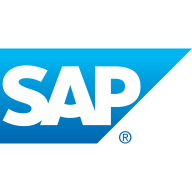


Find out what your peers are saying about Microsoft, Oracle, SAP and others in Relational Databases Tools.
All applications need our repository to provide services for our online business or our customers, so the return is good.
Oracle's technical support is not very effective.
It seems very difficult to get proper advanced assistance on advanced or complicated problems.
The quality of support from SAP is very good; if it's a known problem, they will have a knowledge base, so we will get immediate assistance.
When we created support tickets, the experience was very positive.
The database regularly releases new versions with better performance and security features.
We can span the read and write load into multiple nodes, and that scalability is there.
If we wanted to add more servers into this entire setup, that would be fairly easy, so it's rather good when it comes to scalability.
The server where we installed it has grown from 64 gigabytes in RAM to 256 gigabytes, demonstrating significant scalability capabilities.
Oracle Database is very robust, and I rate its stability nine out of ten.
It's usually something external, such as lack of disk space or problems arising from the integration to other systems.
Oracle Database needs improvement in data analytics capabilities, AI involvement, machine learning, and deep learning.
If the CPU utilization is very high, there is no direct way we can find out which query is taking the most CPU.
When there is an issue, the error messaging we get is not always sufficient to do a fast and solid fix.
I would appreciate using Microsoft Pro as it can integrate with Excel or, with a simple query, consume information from the database using Microsoft Excel.
When we consider the price for replication in another site, the pricing becomes prohibitive.
For medium businesses, Oracle and IBM DB2 pricing are quite similar.
Its data management capabilities include data quality, data integration, data architecture, modeling, and data security, which are very important for data-driven companies.
We can get historical data quickly, and you can fetch information very quickly because every column is indexed.
The most valuable feature of SAP IQ for us is that it works very effectively with the SAP BusinessObjects which we use it with.
For disaster recovery features supporting mission-critical applications in our organization, we have implemented the high availability feature of SQL Server.
I have been working with SQL Server for a long time, and it works well for me as I am using it in different applications, such as web applications, Windows applications, or the data warehouse reporting.
| Product | Market Share (%) |
|---|---|
| SQL Server | 15.8% |
| Oracle Database | 12.6% |
| SAP IQ | 1.0% |
| Other | 70.6% |



| Company Size | Count |
|---|---|
| Small Business | 87 |
| Midsize Enterprise | 64 |
| Large Enterprise | 177 |
| Company Size | Count |
|---|---|
| Small Business | 7 |
| Midsize Enterprise | 2 |
| Large Enterprise | 15 |
| Company Size | Count |
|---|---|
| Small Business | 121 |
| Midsize Enterprise | 58 |
| Large Enterprise | 112 |
Oracle Database is a top-ranking multi-model database management system by Oracle Corporation. Through Oracle database services and products, clients receive cost-optimized and high-performing versions of Oracle Database, as well as in-memory, NoSQL, and MySQL databases. The solution is available by several service providers on premises, in the cloud, or as a hybrid installation. It can be run on vendor servers as well as on Oracle hardware, including Exadata on-premise, Oracle Cloud, or Cloud at Customer.
Users can select from various types of Oracle Database solutions, depending on what they aim to do with this product. Based on their specific needs, they can choose among options that include:
Part of this product is a fully automated database service called Oracle Autonomous Database, which facilitates the development and deployment of application workloads for organizations. It is built on Oracle Database as well as on Oracle Exadata. This service supports various data types and simplifies application development and deployment from modeling and coding to extract, transform, load process (ETL), data analysis, and database optimization. The service achieves high results in:
Oracle Database Features
Oracle Database has various features which users can utilize in their work with the solution. Among these features are the following:
Oracle Database Benefits
Oracle Database offers its users various benefits. Some of these include:
Reviews from Real Users
Paul S., president at Advance Consulting Enterprise, likes Oracle Database because it gets the job done, doesn't fail, and suitable for massively scalable applications.
An Oracle DBA at a computer software company describes Oracle Database as reliable with good performance and very good stability.
SAP® IQ software delivers speed and power for extreme-scale enterprise data warehousing and analytics. Its column-oriented, grid-based massively parallel processing (MPP) architecture and patented data compression and indexing technologies enable companies to exploit the value of huge amounts of data at the speed of business.
SQL Server is a relational database management system (RDBMS) by Microsoft. The product's main purposes are to store data and retrieve it as requested by other software applications - on the same computer or on another computer across a shared network. The solution is built on top of Structured Query Language (SQL), which is a standardized programming language used for relational database management.
The product is tied to Transact-SQL (T-SQL), which is an implementation of SQL from Microsoft that adds several proprietary programming extensions to the standard language. SQL Server is built similarly to other RDBMS products, as its structure is a row-based table that connects related data elements in different tables to one another. One of its most important components is the SQL Server Database Engine, as it controls data processing, storage, and security. Beneath the Database Engine is the SQL Server Operating System, which is used for memory and I/O management, locking data to avoid unneeded upgrades, and job scheduling.
The solution has four editions with different sets of services and tools. They include:
The first two are available for free and are typically utilized by smaller companies, as they work with fewer functions and storage. The second two editions are generally used by bigger organizations and enterprises and offer more features.
The solution has several functions through which users can facilitate different data-related processes. These include:
SQL Server Services
SQL Server has a wide range of add-on services that provide additional benefits beyond database management. These services include:
SQL Server Benefits
The solution has many benefits for users. These include the following:
Reviews from Real Users
A president at a consultancy evaluates SQL Server as a veteran solution with critical log shipping feature.
Harkamal S., a user at a manufacturing company, rates SQL Server with a high mark because it is a stable, scalable, and easy-to-deploy solution that pretty much covers everything.